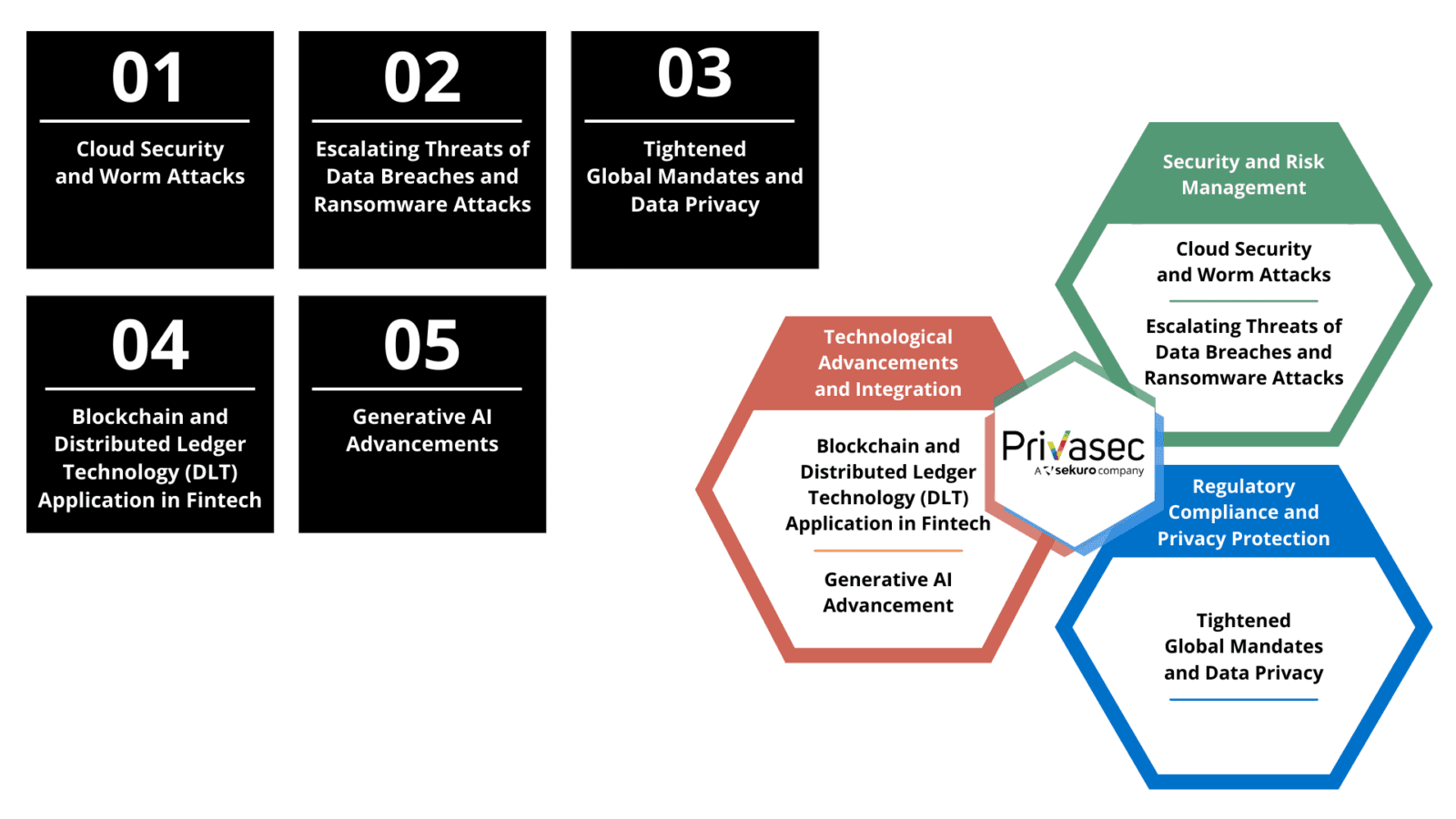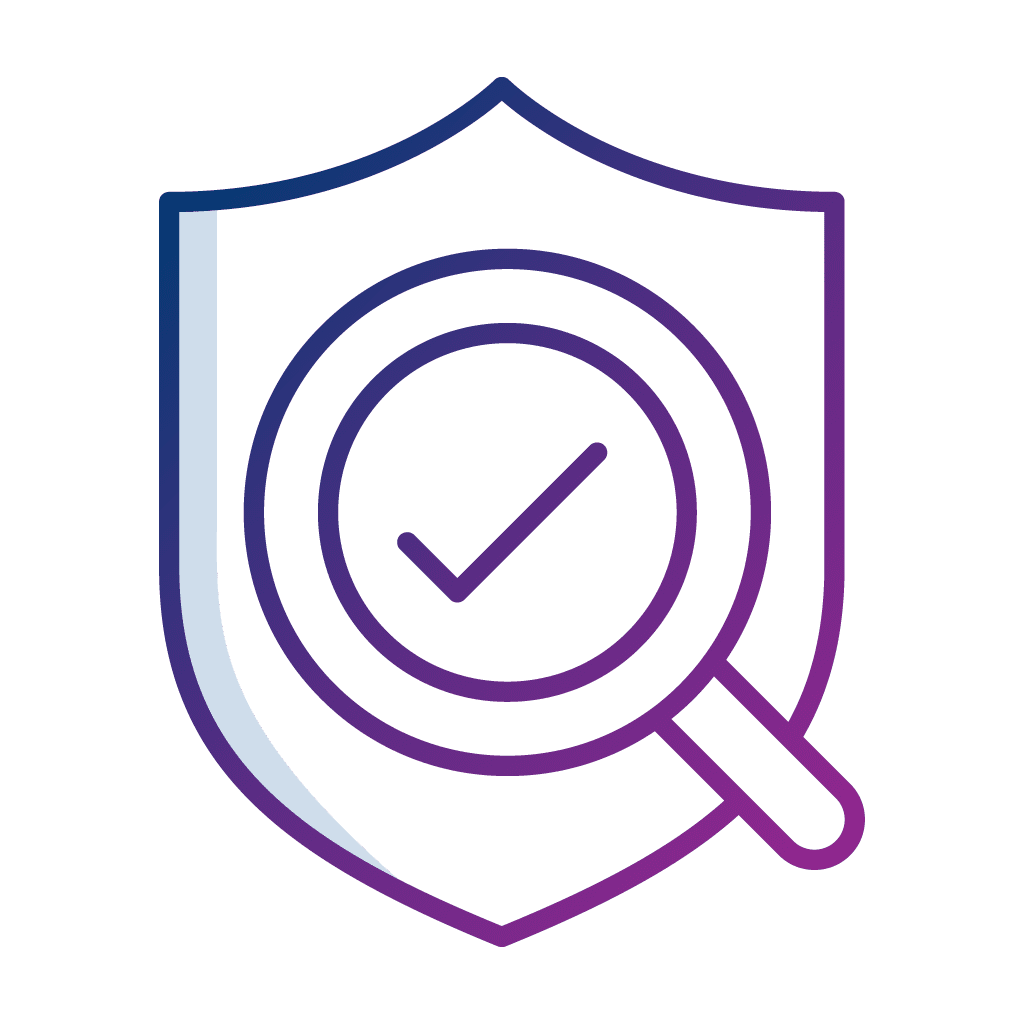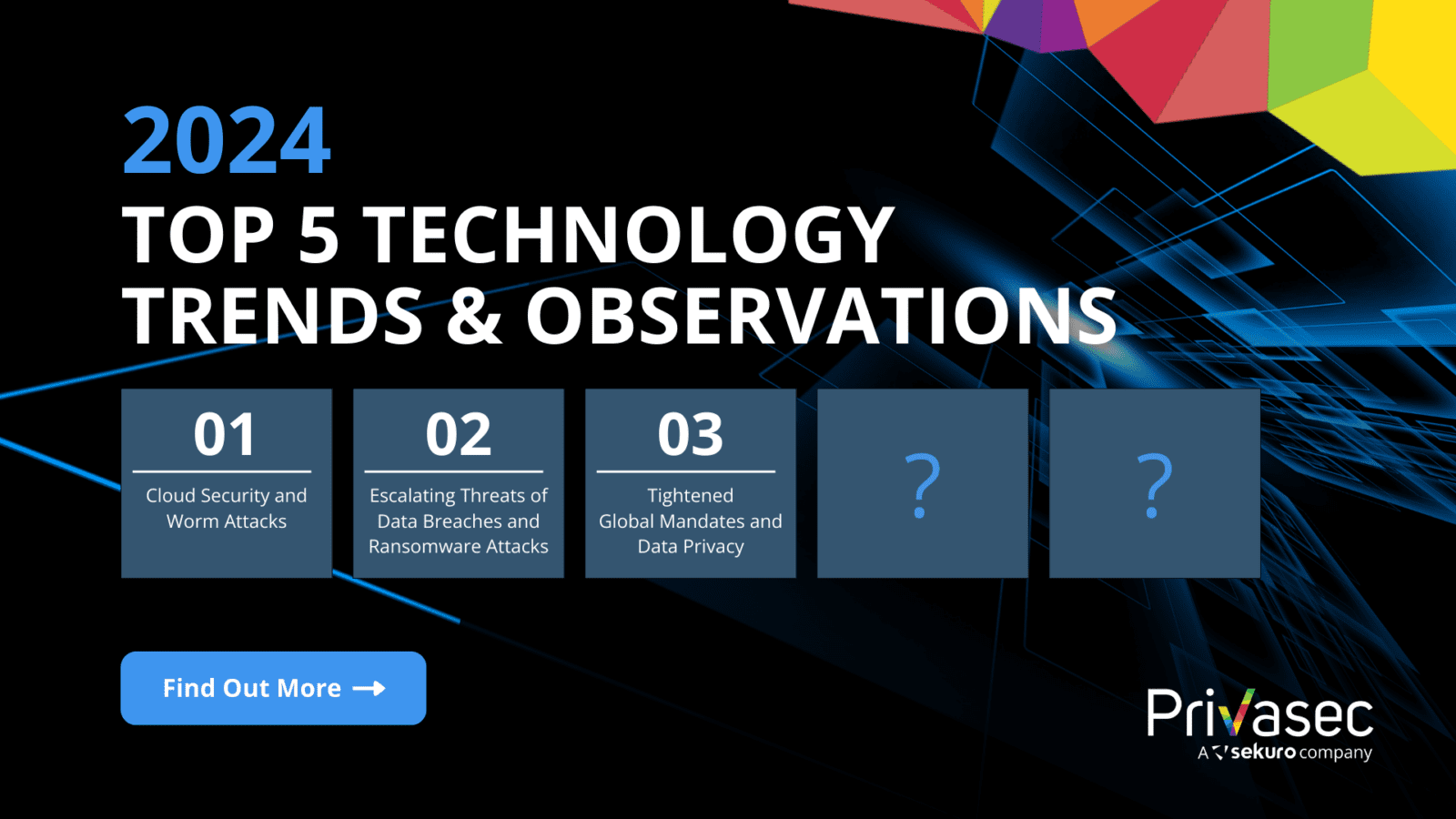As we venture into 2024, the cybersecurity landscape presents a dynamic environment filled with shifts and challenges. In the face of evolving threats and regulations, remaining ahead in this rapidly changing technological landscape demands a thorough grasp of emerging trends. These trends serve as a guide for strategic investments and resource allocation, enabling organisations to effectively address cyber risks and safeguard against threats.
Through rigorous research and careful market analysis using our internal expertise, we have identified five significant global cybersecurity trends shaping the year ahead. These findings are segmented into three key categories to guide organisations in prioritising their cybersecurity investments.

3 Categories of Technology Trends & Observations in 2024

Technology Advancements and Integration
Blockchain and Distributed Ledger Technology (DLT) Application in Fintech
When integrated into fintech for cybersecurity augmentation, Blockchain and DLT can bolster data integrity, secure transactions, and mitigate fraud, thereby fortifying defenses against cyber threats. While these technologies provide improved security through decentralisation, immutability, and cryptographic mechanisms, they also harbor the potential for exploitation by malicious actors, resulting in privacy breaches and financial losses. With the growing prevalence of cross-border payments, implementing compliance measures is crucial to ensuring the security of online payment transactions.
Generative AI Advancement
Generative AI offers promising advancements like enhanced threat prediction and detection, faster incident response, and adaptive defense mechanisms. However, as generative AI evolves, it is imperative to exercise caution and establish robust safeguards to mitigate the potential misuse of this technology for malicious intents, such as targeted phishing campaigns and malware obfuscation.

Security and Risk Management
Cloud Security and Worm Attacks
Originally designed for interconnectivity, the growing complexity of cloud infrastructure provides accessible entry points and ample opportunities for worm attacks to proliferate and target interconnected systems. Worm attacks exploit vulnerabilities and misconfigurations, turning applications into launchpads for malicious payloads, enabling attackers to propagate threats and infect multiple containers simultaneously. As such, robust defense mechanisms and thorough security audits are vital to counteract evolving cloud-native attacks.
Escalating Threats of Data Breaches and Ransomware Attacks
In 2023, the global average cost of a Data Breach reached USD 4.45 million, marking a 15% rise over a three-year period.
IBM, 2023
In 2023, Ransomware Attacks affected 72.7% of all organisations. Ransomware costs is projected to reach $265 billion USD annually
by 2031.Cobalt, 2023
Human vulnerability remains a critical weak point in IT security. Attackers often employ social engineering tactics to coerce individuals into divulging sensitive data, clicking on malicious links, or downloading malware.
Cybercriminals exploit organisational systems and network vulnerabilities with greater frequency and severity. These attacks are becoming increasingly sophisticated, contributing to the escalating risk of data breaches and ransomware occurrences. The heightened financial repercussions of such incidents, encompassing ransom payments, regulatory fines, legal expenses, and reputational harm, have garnered widespread concern and focus.

Regulatory Compliance and Privacy Protection
Tightened Global Mandates and Data Privacy
Data privacy and protection have evolved from mere good business practices to legal obligations mandated by tightened global regulations. Navigating the diverse legislative landscape across countries and states poses challenges for businesses in understanding the extent of compliance required with privacy laws.
The growing awareness of potential threats to personal data privacy has intensified the demand for stricter global mandates and data privacy regulations. This highlights the pressing necessity for organisations to stay informed and prioritise robust data protection measures to mitigate the risk of costly penalties, ransom payments and reputational harm.
In Summary
It is evident that organisations face numerous challenges and opportunities in the face of evolving threats and regulatory demands in 2024. The rapid evolution of technology necessitates a proactive approach to identifying and understanding emerging trends.
By taking into consideration these global cybersecurity trends and implementing proactive measures such as cybersecurity certifications, simulations, or compliance protocols, organisations can prioritise their cybersecurity investments to enact effective solutions and align their strategies to navigate the dynamic cybersecurity landscape effectively.


























